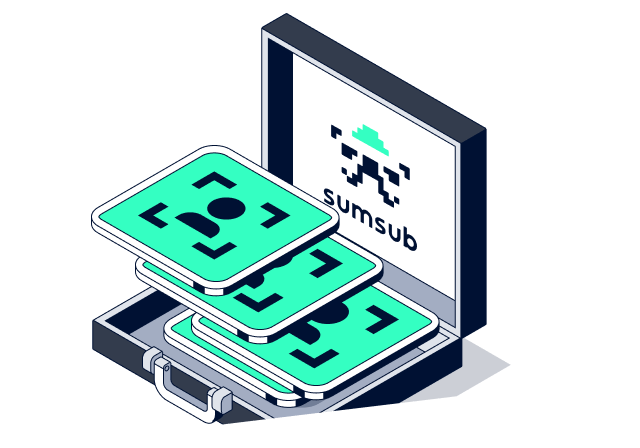- Nov 11, 2025
- 5 min read
Cheats, Ghosts, and AI: The Biggest EdTech Fraud Risks of 2026
Read on to find out how the shifting technological landscape is impacting fraud in EdTech and what can be done to stay safe.

In 2025, access to high-quality education is more widespread and affordable than ever, with millions of people able to learn online at little to no cost. Digital learning is no longer limited to private platforms or informal courses—government universities, state institutions, and private providers now offer official online programs, expanding opportunities for learners around the world.
Demand for digital learning continues to surge: the global e-learning services market was ~USD 299.67 billion in 2024 and is projected to grow to around USD 842.64 billion by 2030, with a compound annual growth rate of ~19%. This growth is largely driven by EdTech—technology, digital tools, and software used to enhance teaching, learning, and educational administration. The rise of EdTech has been nothing short of spectacular.
As the scale of this vital industry has grown, so have the risks of fraud: technology-assisted cheating, AI-fuelled impersonation, scholarship scams, and ghost-student schemes are becoming increasingly common. This technological shift is happening fast, with UK universities confirming AI-related cheating cases rose from 1.6 per 1,000 students to 5.1 per 1,000 in a single year.
So, how can EdTech businesses survive—and thrive—in this new environment?
Major EdTech fraud risks and cases
Traditional education fraud, from forged certificates to cheating in exams, has been a problem since time immemorial. However, EdTech fraud is digital-first, thriving on automation, anonymity, and cross-border reach, which also puts it at risk of new threats.
The digital nature of EdTech also adds considerable complexity. Fraudsters can now use AI to mass-produce fake identities, use spoofed documents to pass verification processes, and operate coordinated networks across borders. The incentives are enormous: fraudulent certificates can secure course admissions, visa approvals, and funding opportunities, while AI tools make deception faster and harder to detect.
Among the most pressing EdTech fraud risks are:
Identity fraud:
Fake or stolen identities can be used to register for online and even offline courses, exams, or scholarships. These can range from complex schemes and technologies, such as deepfakes, to brazenly simple ones. One woman in the UK, for example, admitted to fraud after completing UK citizenship tests for other people while simply wearing different wigs.
“Ghost students”/enrollment fraud:
In online courses and digital learning programs, institutions and platforms can unknowingly record “students” who don’t actually exist. These are synthetic profiles created to access government grants, financial aid, or platform incentives. These synthetic profiles are often supported by AI-generated documents, fabricated identities, and deepfake videos or selfies that can pass weak verification checks, making them difficult to detect.
A Fortune investigation estimated that around USD 90 million was lost to aid fraud in 2025, with criminals using fake identities to enroll in online programs and collect payments. In California, colleges flagged 1.2 million suspicious FAFSA applications and over 223,000 likely ghost enrollments, resulting in millions in unrecoverable aid.
Hidden devices and AI tools:
Remote exams and new technologies mean cheating can be harder to detect. Students may use hidden devices and AI tools to gain an unfair advantage. In 2024, Turkish authorities arrested a university entrance exam candidate who used a button camera connected to an AI model to receive answers in real-time via a hidden earpiece. Cheats are inventive in their methods, and the challenge to combat fraudsters is made even harder in remote examination settings.
Credential forgery:
Fraudsters can fabricate fake certificates, transcripts, language tests, or admission documents, which may be hard to detect due to the global scale of the EdTech sector. The scale of credential forgery is vast in academic settings. In Hong Kong, for instance, 126 cases of fake academic qualifications involving students at local universities were reported in the first seven months of 2025. Between January 2022 and July 2025, at least 55 individuals were arrested for using fraudulent credentials.
Account sharing:
Multiple users can also share one paid account or hack access to premium course materials and certification platforms. This is a form of theft with a significant impact on the EdTech sector, causing the global EdTech market to lose a great share of its revenue due to account sharing.
Subscription and promo abuse:
Subscription and promo abuse means exploiting free-trial loopholes using disposable emails, bots, or synthetic identities to avoid paying. Common abuses include free trial cycling (using multiple identities to repeatedly claim free trials) and reselling discounted subscriptions to third parties, which results in significant financial losses for platforms.
Multi-accounting and fraud rings:
Fraudsters are creating or controlling multiple accounts to amplify their reach, using coordinated “student” profiles to secure scholarships, referral bonuses, or course-completion incentives. In one 2025 case in Bengaluru, India, authorities uncovered a 643-person scholarship-forgery ring that used fake documents and digital identities to claim minority-education grants worth ₹1.35 crore (approx. USD 150K).
Modern AI-powered fraud-prevention solutions, however, can detect fraud rings and synthetic identity clusters before the damage is done.
Suggested read: Bypassing Facial Recognition—How to Detect Deepfakes and Other Fraud
Why EdTech companies need to take fraud seriously
In an increasingly competitive market, where students and educators can switch platforms with a single click, maintaining trust is everything. And nothing erodes trust faster than fraud. These are just some of the reasons to take EdTech fraud seriously:
- Reputational risk: If certificates or test scores are compromised, platforms lose trust. Trust is incredibly easy to lose in the current climate.
- Financial risk: Beyond direct losses, there can be audit costs and regulatory fines associated with EdTech fraud.
- Regulatory scrutiny: Education is coming increasingly under the lens for fraud, funding assurance, data protection, and identity verification.
- User frustration: Scaling without appropriate verification leads to high false-positive risk and increased friction.
- Exposure to visa fraud: Fraudsters may use fake online course completion or language certificates as part of student visa applications. Immigration authorities increasingly monitor digital education credentials for tampering.
- Competitive edge: Fraud-resilient EdTech firms have a market advantage as institutions and regulators become more selective about partners.
Duolingo and Sumsub: A new standard for digital exam security
Recognizing the scale of fraud in EdTech, some leaders in the sector are moving quickly to strengthen their security practices.
In March 2025, Duolingo announced a groundbreaking partnership with Sumsub to strengthen fraud prevention across the Duolingo English Test (DET). This digital exam is recognized by institutions and immigration authorities worldwide, including Harvard, Stanford, and major government visa programs.
While some examinees have tried to bypass identity verification processes through methods like deepfakes, forged documents, and fraud networks, DET’s systems are actively catching and preventing these efforts. Sumsub’s user verification and fraud prevention solutions provide an added layer of security, enhancing DET’s defenses to stay ahead of increasingly sophisticated means of fraud.
Basim Baig, Head of Test Security for the Duolingo English Test, said:
This collaboration ensures we stay one step ahead of increasingly sophisticated fraud attempts, reinforcing the strong security foundation we’ve already built. We remain committed to maintaining the highest security standards, which ultimately protects the interests of both our test-takers and the institutions that rely on our test results.
Suggested read: Liveness Detection: A Complete Guide for Fraud Prevention and Compliance in 2025
Keys to EdTech success in 2026: Verification and trust
AI is changing our understanding of how we prove who we are. From finance to education, no field is immune to these changes, and the rapid escalation of AI-fueled fraud is only going to continue into 2026. The explosive growth in the EdTech sector makes it more pressing than ever to meet these challenges head-on, verify users to fully realize the extraordinary potential of educational breakthroughs, or risk loss of reputation and, most importantly, trust.
Relevant articles
What is Sumsub anyway?
Not everyone loves compliance—but we do. Sumsub helps businesses verify users, prevent fraud, and meet regulatory requirements anywhere in the world, without compromises. From neobanks to mobility apps, we make sure honest users get in, and bad actors stay out.





